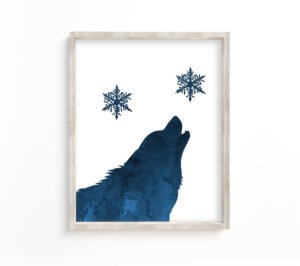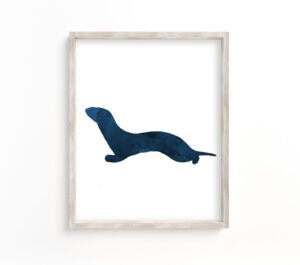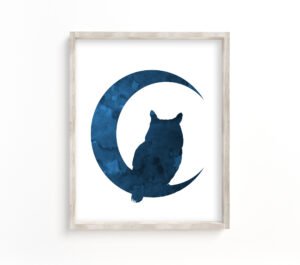Which Animals Use Camouflage?
Which Animals Use Camouflage?
Camouflage can be so effective that even humans can have trouble spotting animals that use it! And while some of today’s top hunters such as eagles, hawks, hyenas, seals, and killer whales might nab most of the headlines when it comes to animal hunting techniques, animals have been surprising us for millions of years with their ability to remain undetected. Camouflage is the name for any coloration or shape that allows an animal to blend in with its surroundings, making it hard for predators to spot it. Almost all wild animals have some camouflage. It helps them hide from predators, allowing them to attack their prey undetected.
The ability to blend in, whether with the background or with other individuals of your species, is critical for survival.
There’s no doubt that some animals are better at hiding than others, so let’s figure out which animals use camouflage?
Ermines! Of course, the most important animal on our list. Why? Because they’re adorable! Ermines use camouflage to blend in with the snow.
Lizards are famous for changing colors and blending in with their environment. This helps them avoid predators and allows them warm-up or cool down depending on the temperature of their surroundings. For example, anole lizards found in Central and South America can change color to match many different backgrounds, from green when it’s hot outside (so they appear cooler) to brown when it’s cold.
And chameleons are known for being able to swivel their eyes independently – looking out for predators while their heads are still – giving them a 360-degree view around their bodies. This is important because it helps them spot predators, but more importantly, to catch prey. By changing color, body shape, and even posture throughout the day, lizards can blend in with just about any type of habitat or background within their natural range.
Owls are famously known for blending in with the night sky. Their feathers and speckled breasts cause their body to look like nothing more than a dark shadow when viewed below, which helps them hunt at night. Other species like the owl butterfly may have evolved to look like owls.
Speaking of butterflies! Butterflies are animals who use camouflage to blend in with their surroundings. Many butterflies have bright colors that help them hide in flowers, from reds and oranges to blues and yellows, making them challenging for predators to see them against a flower background.
Many Insects use camouflage as a form of defense against predators who would usually see them as prey! Some insects will use colors that match their surroundings or even mimic the appearance of larger animals or poisonous plants to ward off potential attackers, with the stick insect being one excellent example.
Squirrels, relying on fur colors that match bark patterns or leafy greens, help them remain undetected as they scamper up trees. Squirrels hide in plain sight by using camouflage!
The giraffe is another animal you may not think of when you hear about camouflage. Giraffes have black spots on their bodies that help them blend in with the shadows of tree branches, making it difficult for predators to spot them in the savannah between grass, bushes, and trees.
The tiger is another animal that uses camouflage because its coloration blends in with the grass or foliage landscapes within its range. Tiger stripes are a fantastic form of camouflage that allows them to hide in plain sight by breaking up his body shape, so it resembles nothing more than a patchwork quilt.
The Florida panther is another endangered cat that relies on camouflage. To make sure it keeps close to prey and avoids danger, the panther has evolved into an excellent hunter and uses its keen hunting skills to capture white-tailed deer as well as smaller mammals for food. In addition, scientists believe that by covering up with their tawny fur in tall grasses or tan sand dunes along riverbeds, they can hide from both predator and prey alike. This species’ ability to blend into its surroundings will enable it to live on the dwindling number of lands it still inhabits in Florida.
Lions also use camouflage to blend into their surroundings. Two of the most common ways lions do this are by hiding in tall grasses or sunning themselves on top of a rock to resemble just another part of its environment.
Montane voles are small little animals who live high up in the snow-capped mountains where vegetation is sparse. So how do they survive? Scientists discovered that these ground-dwelling mammals developed white coats during the winter season to help them blend in with the snow and avoid predators who rely on vision for hunting prey. When it’s warmer, their coats change from white back to brown in the summer months.
The Snowy Owl is another animal that relies on its back to blend in with the snow and avoid being eaten. These giant white birds live in snowy regions like northern Canada, Alaska, and Siberia, where they feed primarily on lemmings.
Lemmings are small rodents who use their color as camouflage to hide from predators like the Arctic fox or Polar bear. In winter, Lemmings change from a brown coat to pure white and stay camouflaged for nearly seven months before going back to their original colors at the beginning of summer.
In addition to using camouflage techniques, some animals even rely on mimicry. Mimicry is when one species uses markings like those of another species or even human beings to throw off predators. One great example is the orchid mantis, which uses its extraordinary flower-like appearance to attract pollinating insects into landing on it so that it has an easier chance of eating them!
A more familiar mimic is the harmless king snake who imitates a poisonous coral snake’s pattern and color to ward off potential predators. The ancient Egyptians recognized this camouflage for what it was, incorporating these pictures into their hieroglyphic images of recognizable objects.
Another great example of insect camouflage is provided by the bumblebee fly, which looks just like one! You might be surprised to learn that this species is not a sneaky predator waiting to catch an unsuspecting bee unaware; instead, it simply uses mimicry for self-defense purposes when other insects threaten it. The pattern and color scheme are all there – even the “sting” on the end of its abdomen!
In addition, some animals will alter their patterns and colors seasonally based on temperature changes to blend in better with their surroundings.
Ermines are small weasels that change from white in winter to brown in summer. This provides them with the advantage of blending into both brown grass and snow and helps them hide from their predators, such as foxes, badgers, hawks, owls, wolves, and of course – humans.
One of nature’s most remarkable examples of coloration is found in the cuttlefish. It can change its colors and patterns to match its environment at will. Not only can these creatures do this, but they also use a colored light display on their skin to hypnotize prey or predators.
One of the most famous examples of coloration in animals is non-poisonous coral snakes, which are imitations of highly poisonous species like the cobras, mambas, and kraits. The only way to tell these two species apart without looking at them is by their color patterns. If one happens to be found in a part of the world where there are no venomous snakes around, chances are it will not survive very long!
The leopard frog is another example of animal camouflage. A keen observer can easily see its color-changing abilities to blend into its natural environment – the pond! When the weather is cold and it’s time to hibernate, these frogs will turn from green to brown or grey to help them blend into their surroundings. In warmer weather, when they are active, they can be found in all different colors such as green, tan, gray, brown, and even black.
Crocodiles and Alligators have green-brown color, which matches perfectly with the color of the water. When they remain still and quiet, it is tough to see them against the mud banks of a river or lake, even if you are swimming right next to them!
The coloration of animals is a fascinating subject to study. Knowing how an animal’s colors and patterns work together to provide camouflage can help you understand that not all animals are as dangerous as they look!
In addition, it can help you to be more observant and recognize the ways animals use camouflage in their natural habitat.
-
 $20.00 – $29.00 inc. VatSelect options This product has multiple variants. The options may be chosen on the product page
$20.00 – $29.00 inc. VatSelect options This product has multiple variants. The options may be chosen on the product page -
 $20.00 – $29.00 inc. VatSelect options This product has multiple variants. The options may be chosen on the product page
$20.00 – $29.00 inc. VatSelect options This product has multiple variants. The options may be chosen on the product page -
 $20.00 – $29.00 inc. VatSelect options This product has multiple variants. The options may be chosen on the product page
$20.00 – $29.00 inc. VatSelect options This product has multiple variants. The options may be chosen on the product page -
 $20.00 – $29.00 inc. VatSelect options This product has multiple variants. The options may be chosen on the product page
$20.00 – $29.00 inc. VatSelect options This product has multiple variants. The options may be chosen on the product page -
 $20.00 – $29.00 inc. VatSelect options This product has multiple variants. The options may be chosen on the product page
$20.00 – $29.00 inc. VatSelect options This product has multiple variants. The options may be chosen on the product page -
 $20.00 – $29.00 inc. VatSelect options This product has multiple variants. The options may be chosen on the product page
$20.00 – $29.00 inc. VatSelect options This product has multiple variants. The options may be chosen on the product page -
 $20.00 – $29.00 inc. VatSelect options This product has multiple variants. The options may be chosen on the product page
$20.00 – $29.00 inc. VatSelect options This product has multiple variants. The options may be chosen on the product page -
 $20.00 – $29.00 inc. VatSelect options This product has multiple variants. The options may be chosen on the product page
$20.00 – $29.00 inc. VatSelect options This product has multiple variants. The options may be chosen on the product page